 Your new post is loading...
 Your new post is loading...
This year the EBU BroadThinking Conference was sounding like a holistic swirl, a milestone in the trend of technology to define sets that are greater than the sum of their parts, through creative evolution. « Where Broadcast Meets BroadBand », you get some interesting fusion effect occurring and diluting the traditional boundaries of the screens, with the handheld devices being part of the big screen experience or extending it rather than trying to scalp it, in an environment where all the devices converge towards a restricted set of standards rather than tracing their own line.
While we by default think that standardization kills creativity, events like BroadThinking show that it’s the opposite: if we gather energies to solve common problems together, we can both come up with a more evolved solution and concentrate on what’s important past the pixel grid: the user experience, so consistent across screens that you forget there’s more than one screen involved.
Une présentation OVFSquad de Nicolas Weil le 17/10/13.
Les thèmes abordés :
- panorama du support par l'industrie
- facteurs d'adoption et freins
- analyse du processus de standardisation
- avancées en Common Encryption + Multi-DRM
- point sur les players et HbbTV 1.5
- topo sur les prochains gros dossiers : HEVC, Multichannel audio et QoS
- point sur les déploiements actuels et annoncés
Regoignez OVFSquad sur LinkedIn
http://www.linkedin.com/groups?home=&gid=4509529
Find back all my blog posts about DASH, OTT Trends and Technologies, SecondScreen, OpenSourceTV and much more !
How dynamic is MPEG-DASH Ecosystem after IBC 2013 ? Here is an analysis of the latest trends and an extensive industry DASH-compliant solutions directory. While most of IBC’s buzz was generated by the shiny HEVC + 4K couple, it was a good occasion to stand back from the hype and measure how one of the most important video standards (at least for the OTT world) had spread over the industry since last year. MPEG-DASH is not sexy (let’s remember that it’s basically a collection of XML schemes), it’s a bit boring (as it’s usually demonstrated with the Big Buck Bunny that you saw not less than 2.000 times) and it’s complex – but once you go past those defaults, you might find that its potential to simplify your workflows and boost the profitability of your video service is high… And that’s precisely what the industry has finally understood: video distributors want to streamline their workflows and save their storage budgets by reducing the number of output formats, they search for ways to build long term strategies with evolutive solutions – and all of this implies rolling away from proprietary ABR solutions like Smooth Streaming, HLS, HDS and the now defunct Widevine WVM proprietary packaging format (rest in peace), DASH’s first victim.
Nothing was more welcome after day 1 of EBU BroadThinking 2013 than a good night of sleep, in order to reset the tech hype counters and make some mental room for two new sessions on broadcasters’ CDNs and the latest advances of hybrid platforms. What would be the best broadcasters’ CDN architectures today, what would be their smartest (green) evolutions, would CDN-Federation standards finally bring interop reality over hopes, what would be the most advanced deployments and future of HbbTV, how it compares with YouView in the UK : day 2 agenda was looking quite attractive – and indeed the presentations were packed with valuable informations and experience feedbacks. So here is the recap of the most interesting DAY 2 presentations and a short report on some insightful demos that were playing on the EBU floor right to the conference.
Now that you intensively crawled through part 1 of this blog-post and asked yourself all the right questions intended to avoid common OTT-traps, we can safely presume that you are ready to spend some (or a lot of) time and money on launching your own multiscreen OTT service. So it’s definitely time to choose your bricks, mortar and trowels... As multiscreen OTT/TV Everywhere offers do proliferate while each video tradeshow approaches and connected devices multiply, it’s difficult to monitor all of them and get a 100% accurate idea on who’s got the best offer. Basically your ideal technical partner will most likely be a unique target depending on your background (telco/content owner/TV channel…), your needs (target devices, business models, time to market…), your workflow constraints (CMS, billing, deployed transcoding engines, already deployed apps…) and your budget. Nevertheless, what I tried to do first is to isolate a list of actors whose offer is end-to-end and sufficiently versatile to cover the most common use cases and devices, then provide a complementary list with actors who provide less information but are also known in this market, and then wrap up the post with a bunch of ideas on how you could DoItYourself with less integrated/locking-in solutions. This way, you will end-up with a complete panorama of available technical solutions in mind.
With the fall of Megaupload, legal VOD sites are quickly gaining back popularity as consumers are eager to watch fresh video contents on all their connected devices. If you are a content owner, a TV channel or a telco, it may be the right time to (re)launch you Multiscreen OTT VOD offer.
This post intends to start from the reference tech choices in this game – Netflix’s ones – explain the major challenges of such type of service and the associated DRM issues, and finally drive you throughout the different market options you have to setup your own service on a close basis (this part will be covered in an upcoming post).
Everything would have been easier if Netflix did sell its solution as a white label platform, but it’s not (yet) the case, so this leaves fun territories to explore !
Here is our scenario : you are the technical director of a web startup, already having proven your talents with your thematic VOD streaming channel – and your boss suddenly thinks you’re a grown enough company to jump on the broadcast wagon and manage your own 24/7 live TV channel, targeting IPTV and multiplatform OTT, with a mix of some live studio shows and mainly pre-recorded programs. And of course readify it for later iTV DTT distribution. Quite an exciting challenge ! But once you passed the wow effect, you just realize that despite his high expectations for the TV channel, your boss has got just a web budget – which is close to 0$ – and of course a tight launch schedule. Therefore, your first duty is to be creative on how to build the platform for the lowest possible cost : that’s why, using your web reflexes, you naturally turn yourself towards the open-source world to achieve this impossible mission. Inexpensive or free closed-source software will eventually fill the gaps (and obviously there are some). Fortunately, the web attitude has contaminated many industries with its desire to promote interoperability and avoid vendor lock-in with full-IP standard worflows. The BBC has shown the way for a long-time, funding many developments like the Dirac codec for its own needs of tapeless workflows and open-sourcing them quickly afterwards. Other TV channels like SVT from Sweden (with CasparCG) and many independent developers have jumped onboard, and by combining their efforts with your usual web video tools like FFmpeg or other free tools, you can for sure build the target platform. Apart from this software layer, you’ll just need :
- commodity IT hardware to run all the software
- some inexpensive SDI cards
- the minimalistic general audio/video routing hardware & cables
- a reasonable amount of time to configure and interface all pieces
and of course the right IT/dev skills to bring it all together… OK, Let’s build it now !
WebM is surely one of the hotest streaming topics right now, because WebM is one of the two final HTML5 video standards with H.264. When Google bought On2 in 2009 and open-sourced its latest VP8 codec one year later, two promises were made : providing a codec which quality can compete with H.264 , and providing it in a royalty-free way. On the quality point, the general opinion is that the VP8 codec is slightly less performing than H.264– but it can be an acceptable trade-off regarding the royalties point. Precisely, the royalty-free point is the one which raises the more questions now, as MPEG-LA is said to have a lineup of 12 patent owners ready to claim their rights on intellectual property, as VP8 would use compression techniques taken from H.264. Seeing their fight against Google being a success would cause a major setback in HTML5 standardization efforts around open source solutions – WebM then being another coding technology subject to royalties after H.264. Nevertheless, the patent war has not started yet and WebM is still a good alternative to H.264, on the paper. And that’s why we are curious to know how we can implement it in our existing or upcoming workflows. So let’s walk through the different steps of the WebM streaming workflow !
Maybe some of you remember the Tarari Encoder Accelerator for Windows Media which came on market in 2005 as a FPGA loaded PCI board. It was a 10K$ investment but it could seriously boost your encoder performances and it was a transparent solution for all encoders integrating Windows Media SDK. That was maybe the only real reliable option to do HD encoding decently at that time. More confidential were the Ambric cards for accelerating MainConcept H.264 and MPEG-2 SDK, which were found to be working with Inlet Armada transcoding farm.
Since these days, Tarari boards vanished, Windows Media encoding has been somehow outshined by H.264 and CPU performances have made great jumps, but the needs for hardware accelerated encoding solutions is still there, mainly because :
- H.264 encoding is also hungrily crunching CPU cycles
- screen types to feed have exploded with mobile, tablets, connected TVs and all other OTT devices
- adaptive streaming requires far more versions of the same file that previously mono-bitrate encodings
- available rackspace is not endless and it’s not convenient to manage hundreds of encoding nodes
- new formats like 3D and SVC are demanding strong encoding power
- you like to play with cool high-end encoders and you have strong convincing skills when it comes to make your boss buy expen$ive hardware
So let’s take a look at the different options available on the market now !
|
4K streaming, mobile broadcasting for the crowd, generalized delinearization, worldwide video events…
OTT delivery is just multiplying the challenges, as customers’ expectations are raising each day in terms of video fast-start, instant channel switching, lack of buffer and high frame size/rate – on all devices in all network conditions. To answer those challenges, OTT delivery answer today is basically more unicast sessions, more servers, more peering – and less and less guarantee of satisfying end-user experience as long as there is no specific end-to-end paid agreement to guarantee that the path will be provisioned from the origin server up to the video device. Even in this ideal scheme, the device might still suffer from poor wireless conditions which jeopardize the experience. So, how do we deal with all this stack of potential problems: do we stick to the aging receipts, rely blindly on Moore’s law and perpetuate a hopeless CDN weapons race? Or do we try to find smarter ways to make the OTT growth reach a sustainable delivery model ?
Nicolas Weil, Digital Media Solutions Architect (France, World), provides a nice blog post about the post-IBC'13 MPEG-DASH ecosystem status which highlights also the DASH timeline referred to as "The ABR Esperanto: On the road to standardization..." (ABR stands for adaptive bit rate)
The former provides not only an excellent overview about the status quobut also an implementation directory of products and services supporting DASH (incl. our award-winning bitdash & bitcodin). The latter shows the history of MPEG-DASH from back in 2010 - when standardization started - until now ... but what's next?
MPEG-DASH is the ABR Esperanto. Find out how this major video standard was built since 2011, with crucial contributions from Netflix, Microsoft, GPAC, Alpen Adria University ITEC Institute, DASH Industry Forum, HD Forum, Bitmovin or USP, under the joined standardization efforts of MPEG consortium and ISO, in collaboration with complementary standards from ITU, W3C...
The reign of end-to-end OTT platforms is over, here comes the modular OTT Platform ! With SOA, FIMS, IMF and DASH, agility time has (almost) come... This is the report/sequel of Vimond's Industry Visionaries IBC2013 talk about “The Future of OTT Platforms: Is it Diversification or Standardization ?” with Eric Schumacher-Rasmussen, Editor of Streaming Media Magazine, and Nicolas Weil.
Geneva in late March doesn’t feel as wild as a Las Vegas boulevard, but still there was a reasonable amount of gaming excitement at the EBU headquarters, where several events were following each other, beginning with a DASH Interoperability Forum meeting which was closely followed by the BroadThinking event, where industry actors and broadcasters come to show off their latest implementations advances and/or share the results of their real-life deployments or research studies. A good way of managing the transition between TV Connect and NAB… Where Broadcast meets Broadband : that’s the promise of the EBU’s hybrid event which flies between industry competition, standardization efforts and broadcasters’ realpolitik – all wrapped in a warm and funny ambiance provided by the various speakers and the EBU team gently lead by Bram Tullemans whom I’d like to thanks personnally here for the presentation invitation (kudos also to Filka, Peter and Eoghan for the organization!). Actually the 2013 edition was a major success because it allowed the participants to get a rather good idea of the general trends of the industry, and at the same time to go deep in technology when needed, while having opportunities to discover edge tech demos on the lobby attending the conference room. It’s virtually impossible to render a complete report of everything that has been said or shown there during two days by so many quality speakers (including OnlineVideoFrenchSquad group distinguished members Lionel Bringuier [Elemental Technologies], Martin Boronski [M6 Web], Thierry Fautier [Harmonic] and Nicolas Weil[Challenge2Media] – Les 4 Mousquetaires /poke @sfaure ), but I’ll nevertheless try to provide you here a selection of relevant informations that will help you grasp the trends and prepare the upcoming tradeshows efficiently… So let’s start with DAY 1 recap !
As a teaser for my upcoming blog post (“OTT distribution optimization technologies”), here is a bonus study for you, dear readers… It aims at isolating the main OTT Video Services trends (End-user driven & Production driven) and at pointing out relevant technologies with their maturity estimation and corresponding Vendor + Technology offer tuples. Enjoy and share your thoughts/technology suggestions in comments either here or on the blog ! NW
NAB 2012 closed its doors two weeks ago, so it’s a good time to draw an appraisal on various themes concerning OTT issues, and especially premium OTT issues, that have been handled through industry technology offer during the tradeshow. Here we’ll go from production to distribution and examine the salient NAB facts and products, at least the ones which have a potential influence on OTT workflows evolution in the coming months (or years ?).
You are a TV channel exec, a content owner, a third party service provider or a video architect/developer and you want to build a synchronized second-screen service ?
Here is a panorama of the solutions available on the market for your project, using watermarking, fingerprinting or other technologies : Nielsen Media-Sync, Civolution VideoSync, Intrasonics, Technicolor MediaEcho, Zeebox, Zeitera, Never.no & many others...
If you got a plane for Amsterdam in September, there’s a chance that it’s not (only) to make you bulldog walking under the red lights : you will probably be undermining your new pair of shoes in the alleys of the RAI, seeking the freshness of streaming video innovations. Each year the trip is too short – and the feet do hurt – especially if you didn’t carefully select your target booths in advance in order to see the more interesting technology breakthroughs. While making this preparation exercise, I thought that I could share my choices, in order to save your time and shoes a bit, and to hear back your tips as comments. So here are some suggestions of visits to arrange if your job is to build streaming-media-oriented-production-workflows like I do. See you there ! Covered areas : - WebM encoders/servers - Stream repackagers - Hardware-accelerated encoders/transcoders - nScreens live encoders - Transcoding farms - ABR servers - Workflow enablers - 3D encoders/platforms - DRM platforms - Quality Check systems - Second-screen frameworks/tools - Smart production tools
There are basically two ways to sustain the extensive growth of video formats that you must, as a media distributor, serve to your different clients’ target devices : the most common answer is to choose the best in breed most-powerful encoders to prepare all the target formats during the content preparation time (see Panorama article N°1 on this topic), but you can adopt a different approach saying that you want to prepare your contents once and have the distribution part of the overall workflow take care of the repackaging and protection of the contents on the fly.
Server-side repackaging of the streams consists eventually in :
- choosing languages in audio and subtitle tracks available in the original mux (optional)
- transcoding/transrating the video content in different sizes/bitrates from a high quality video file (optional)
- applying a DRM compatible with the output format (optional)
- generating the manifest file corresponding to the target adaptive streaming technology (mandatory)
- remuxing and chunking the video data according to the output protocol requirements (mandatory)
Historically, repackaging was pushed as a quick solution for broadcasters to add iOS streams on top of existing Smooth or Flash streams. In a wider OTT/Adaptive Bitrate perspective, this alternative approach means : less files to manage in the main production workflow, less storage, less bandwidth to populate the origin servers, smaller time to contents’ online availability and easier support for new formats – shortly said, an agile path.
Potentially a risky one, but quite attractive…
Let's examine the available options on the market, to do it on your own platform or in the cloud !
|



 Your new post is loading...
Your new post is loading...

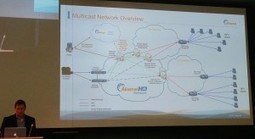



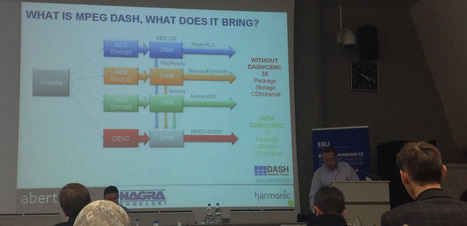
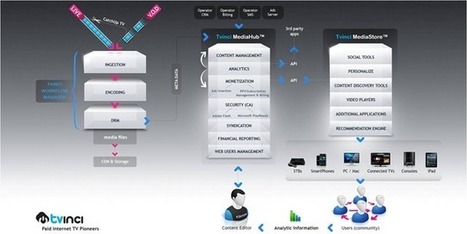


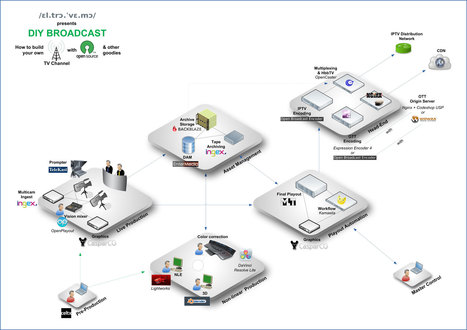

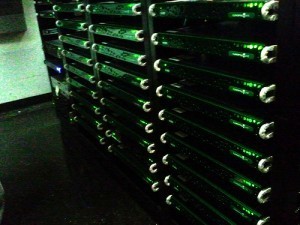
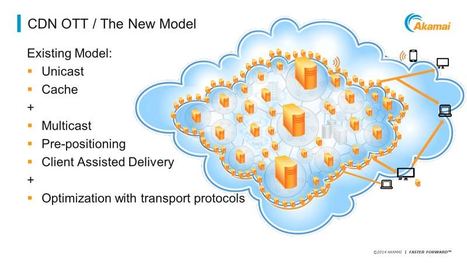


![[IBC 2013 Talk] The Future of OTT Platforms | Video Breakthroughs | Scoop.it](https://img.scoop.it/QcV918WTWh5B0iROqlVSxDl72eJkfbmt4t8yenImKBVvK0kTmF0xjctABnaLJIm9)
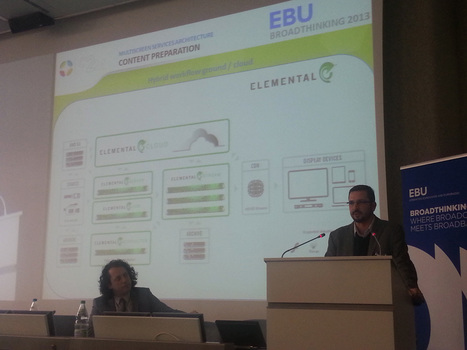
![OTT Video Services : Trends and Technologies [slide deck] | Video Breakthroughs | Scoop.it](https://img.scoop.it/mEBFuHl9IGk6rcbKiWfvpDl72eJkfbmt4t8yenImKBVvK0kTmF0xjctABnaLJIm9)
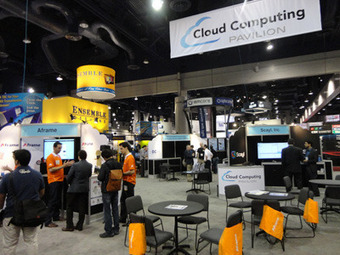



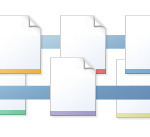





ajouter votre point de vue ...